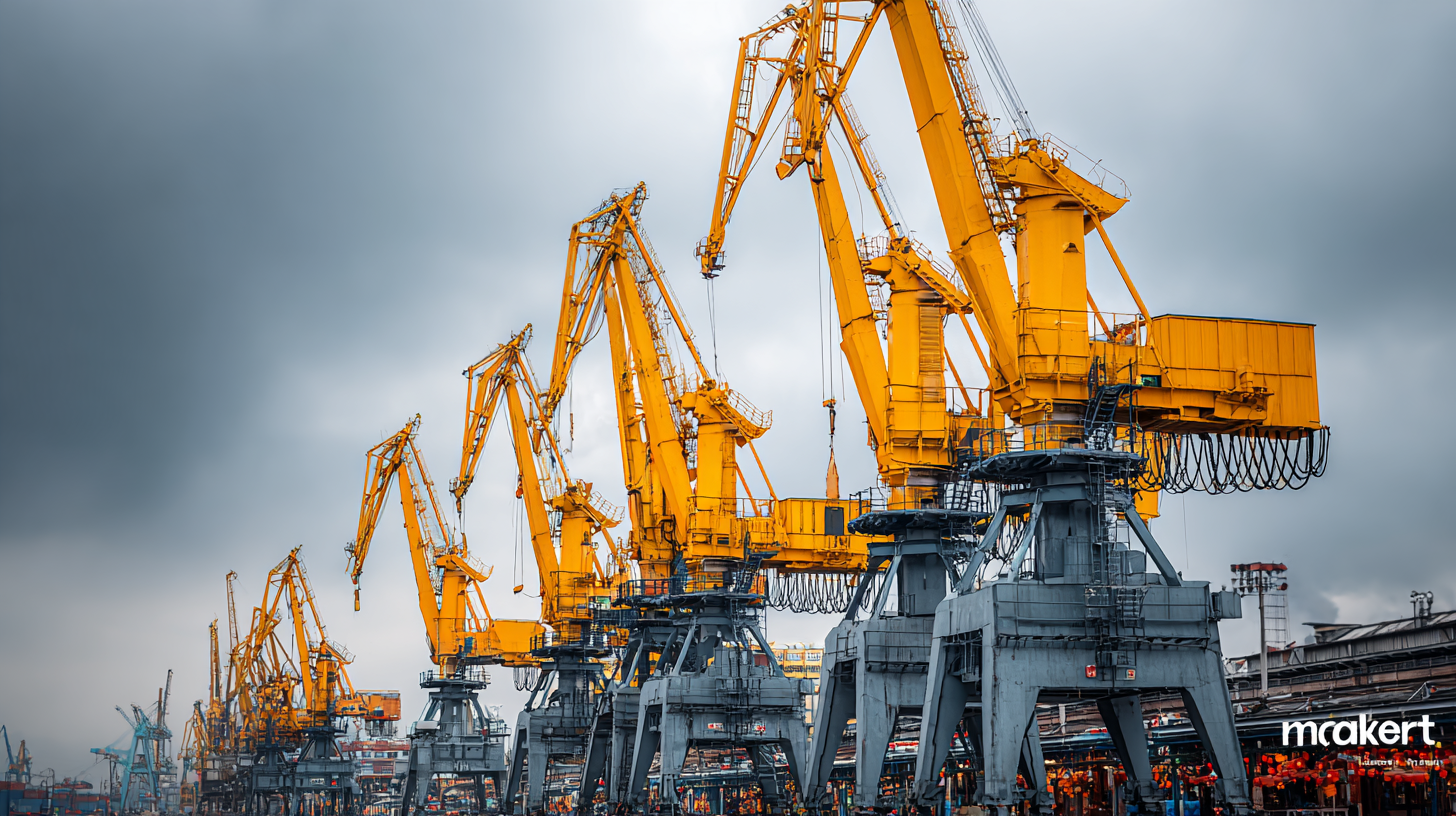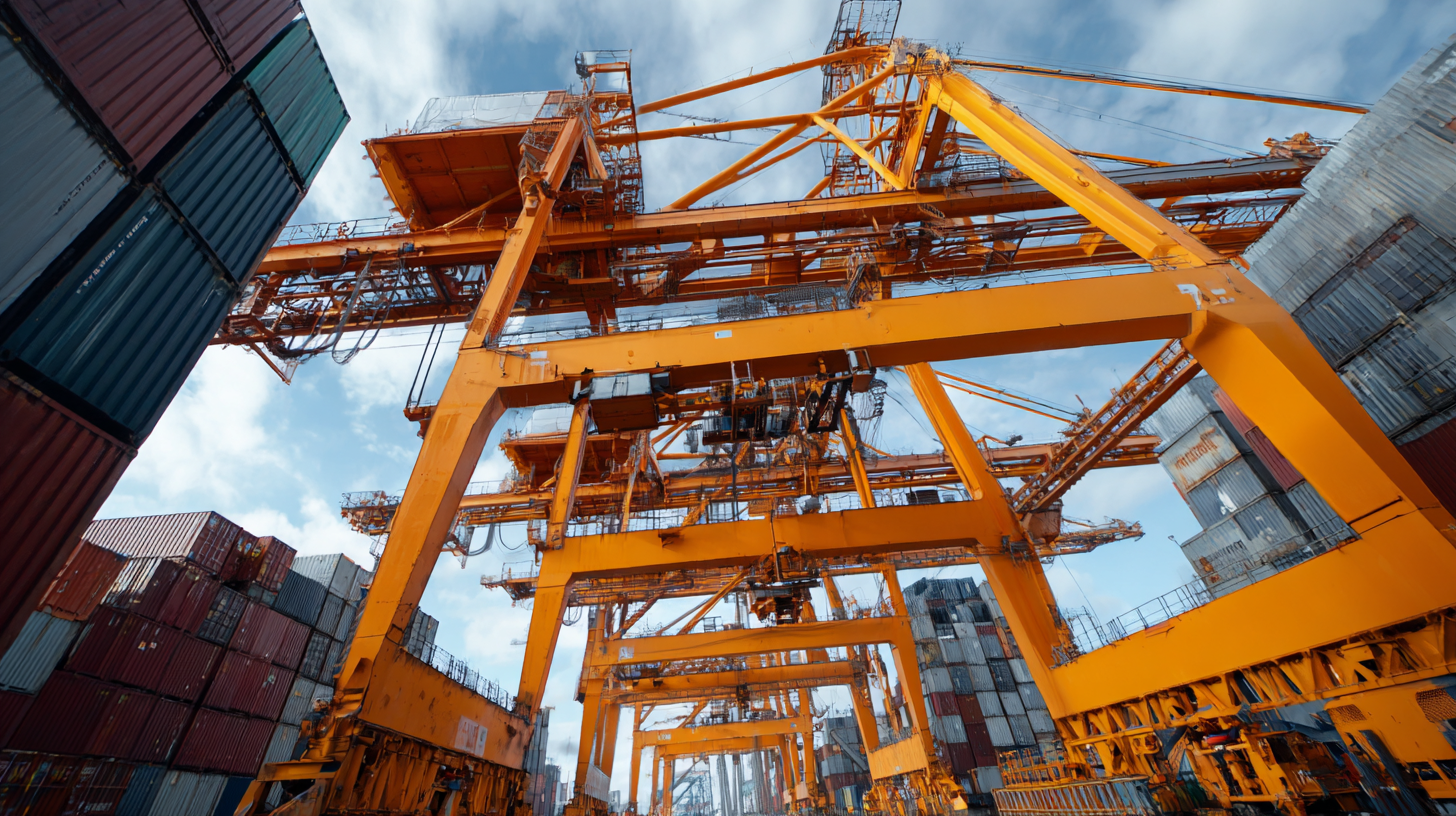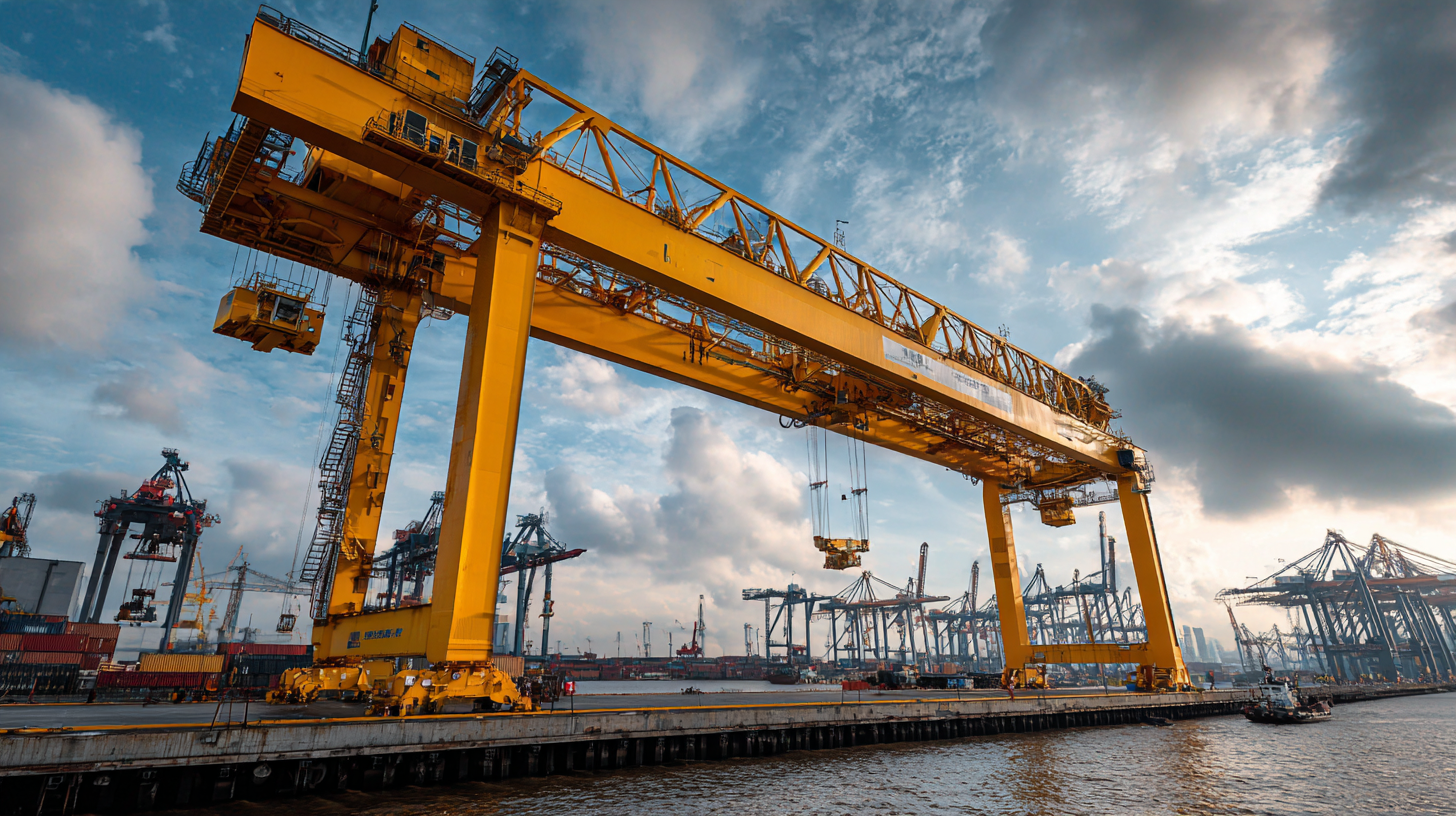Inquiry
Form loading...
-
Phone
-
Wechat

-
Whatsapp

The global market for Over Head Cranes is poised for significant transformation by 2025, driven by innovative technologies and changing industry demands. According to a report by Market Research Future, the overhead crane market is expected to experience a compound annual growth rate (CAGR) of approximately 5.3% during the forecast period. With increasing automation and the need for efficient material handling solutions, various types of overhead cranes—such as single-girder, double-girder, and gantry cranes—are becoming indispensable across sectors like manufacturing, construction, and logistics. Each type possesses distinct characteristics and applications that cater to specific operational requirements, thereby enhancing productivity and safety. As we delve deeper into the trends and innovations shaping this market, it becomes evident that understanding the diverse features and applications of Over Head Cranes is crucial for businesses looking to leverage these advancements for competitive advantage.

The landscape of overhead cranes is undergoing a significant transformation spurred by emerging technologies that are enhancing design and functionality. According to a report by MarketsandMarkets, the global overhead crane market is projected to reach USD 6.69 billion by 2025, growing at a CAGR of 4.2%. This growth is attributed to advancements in automation, which are enabling systems to operate more efficiently and safely in various industrial applications, from manufacturing to logistics.
One of the most revolutionary innovations is the integration of IoT (Internet of Things) technology into crane systems. This connectivity allows for real-time monitoring, predictive maintenance, and improved operational efficiencies. A study from ResearchAndMarkets highlights that IoT-enabled cranes can reduce maintenance costs by up to 30% through proactive diagnostics. Furthermore, the introduction of artificial intelligence offers capabilities like load optimization and enhanced safety measures, making overhead cranes not only smarter but also more versatile in handling complex tasks. The combination of these technologies is setting a new standard for performance and reliability in the heavy lifting sector.
The overhead crane market is poised for significant growth by 2025, driven by key market trends and innovations that are shaping its future. One of the primary market drivers is the demand for enhanced safety and efficiency in industrial operations, particularly in sectors like construction, manufacturing, and logistics. As industries continue to recover from the impacts of COVID-19, the need for advanced lifting solutions is more crucial than ever, pushing companies to invest in state-of-the-art cranes that offer improved performance and reduced operational costs.
Moreover, technological advancements in automation and smart technologies are fueling overhead crane demand. Innovations such as integrated sensor systems and remote monitoring functionalities not only enhance safety but also allow for real-time data analysis, which contributes to more efficient load management. As businesses increasingly prioritize digital transformation, the adoption of smart cranes equipped with IoT capabilities is becoming a necessity. Such advancements are expected to redefine operational standards, ensuring that the overhead crane market remains a pivotal component of industrial growth strategies in the coming years.
As sustainability becomes a pivotal focus across industries, the overhead crane manufacturing sector is embracing innovative approaches to minimize environmental impact. According to a recent report by MarketsandMarkets, the global overhead crane market is projected to reach USD 5.9 billion by 2025, driven by demand for eco-friendly solutions. Manufacturers are increasingly integrating sustainable practices, such as utilizing energy-efficient technologies and recyclable materials in their production processes. This shift not only helps reduce carbon footprints but also attracts environmentally conscious consumers.

One notable trend in the industry is the development of electric and hybrid overhead cranes, which significantly decrease reliance on fossil fuels. A study by Grand View Research indicates that the electric crane segment is expected to grow at a CAGR of over 6.5% from 2020 to 2027. These cranes leverage advancements in battery technology and smart power management systems, enabling improved energy consumption and operational efficiency. Furthermore, manufacturers are innovating in design, creating lightweight structures that use fewer resources while maintaining durability, aligning with the growing emphasis on sustainability in engineering and manufacturing practices.
As overhead crane operations evolve, safety enhancements are emerging as a primary focus, driving innovations that reshape how these machines function. The integration of smart features, such as real-time monitoring systems and predictive maintenance technologies, offers operators unprecedented levels of control and awareness. With sensors that detect potential hazards, cranes can automatically adjust their movements or alert personnel to unsafe conditions, significantly reducing the risk of accidents on the job site.
Moreover, advancements in data analytics are paving the way for improved decision-making processes in crane operations. By analyzing performance data, businesses can optimize lifting strategies, enhance load management, and streamline operations. Implementing machine learning algorithms allows cranes to adapt to varying operational environments, learning from previous tasks to improve efficiency and safety. As industries continue to prioritize worker safety, these intelligent systems will undoubtedly play a crucial role in the future of overhead crane operations, leading to safer, more efficient work environments.
| Year | Market Size (Million $) | Expected Growth Rate (%) | Smart Features Adoption (%) | Safety Enhancement Technologies (%) |
|---|---|---|---|---|
| 2023 | 4500 | 5.0 | 30 | 25 |
| 2024 | 4725 | 5.5 | 40 | 30 |
| 2025 | 4950 | 6.0 | 55 | 35 |
The overhead crane market is poised for substantial growth in the coming years, driven by innovations and increasing demand across various industries. According to a recent market research report, the global overhead crane market is expected to expand at a compound annual growth rate (CAGR) of over 4.5% from 2023 to 2025. This growth is primarily attributed to the rising automation in manufacturing processes and the need for efficient material handling solutions.
In terms of technological advancements, the integration of IoT and smart sensors into overhead cranes is revolutionizing their operation. These innovations not only enhance safety but also improve efficiency by enabling predictive maintenance and real-time monitoring. A study by Grand View Research highlights that the implementation of smart technologies could reduce operational costs by up to 25%, making overhead cranes more attractive to businesses aiming for optimization. As industries adapt to these trends, the future of overhead cranes looks promising, marked by increased sustainability initiatives and automation, ensuring that they remain a critical component of modern manufacturing and logistics.

